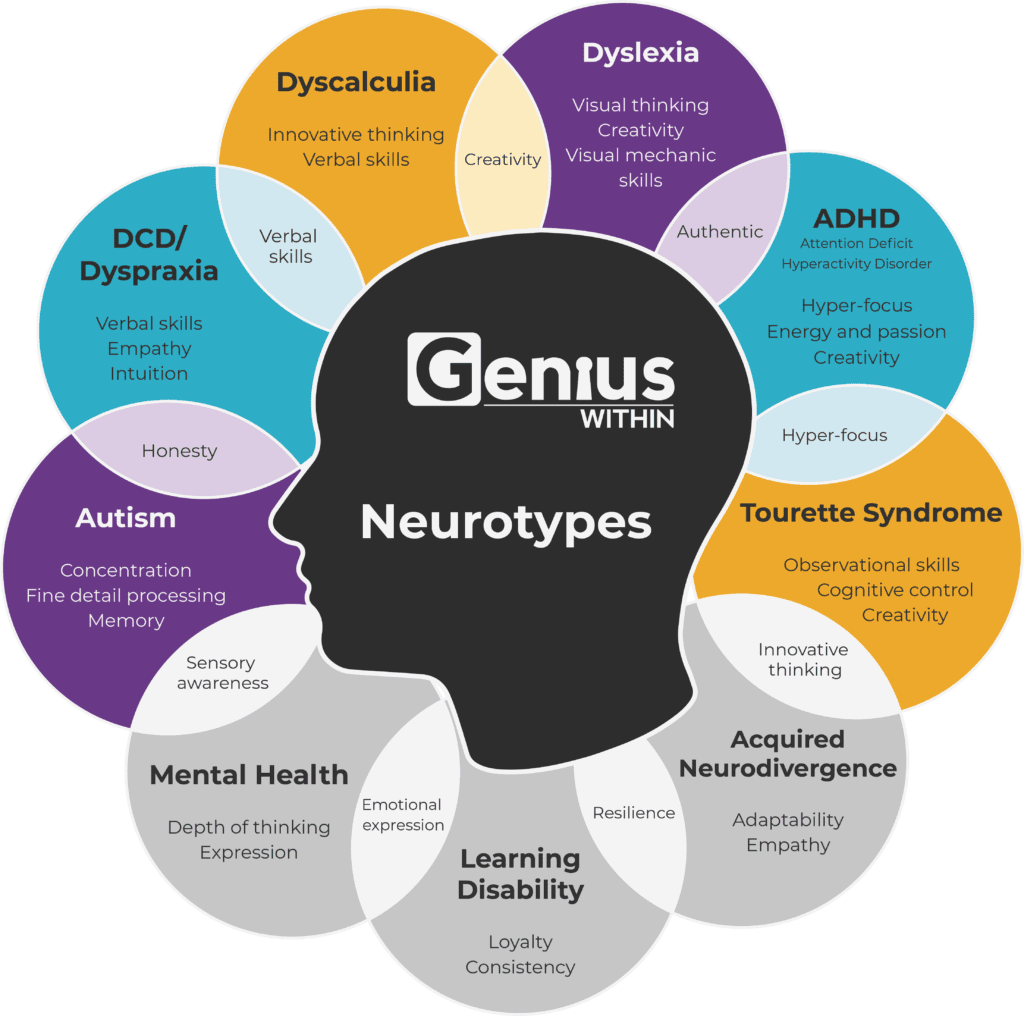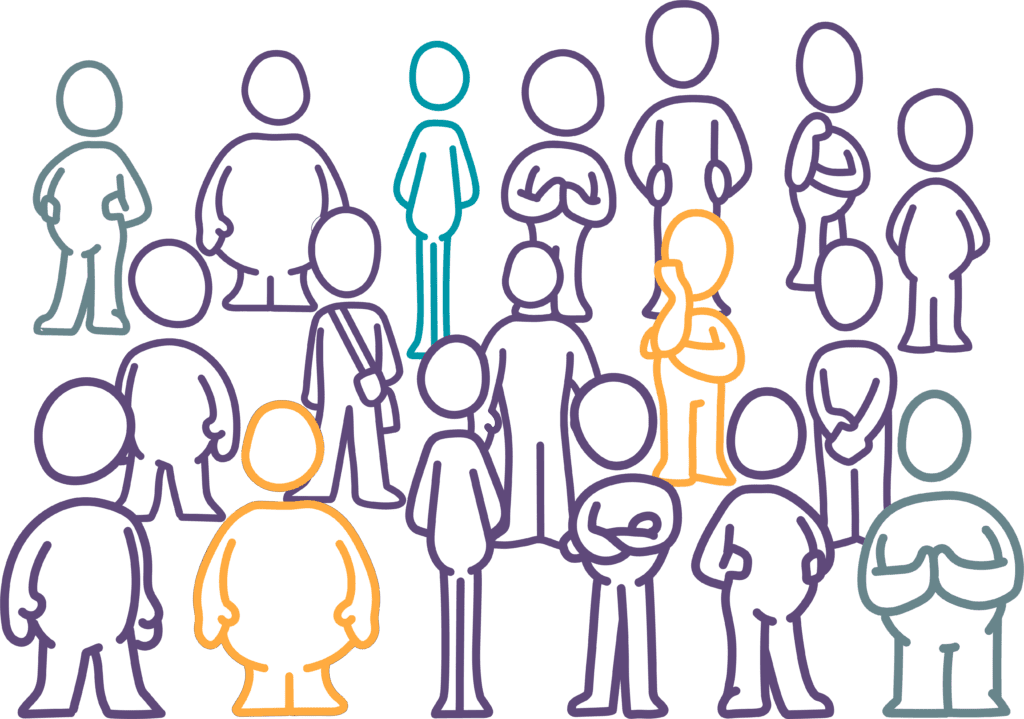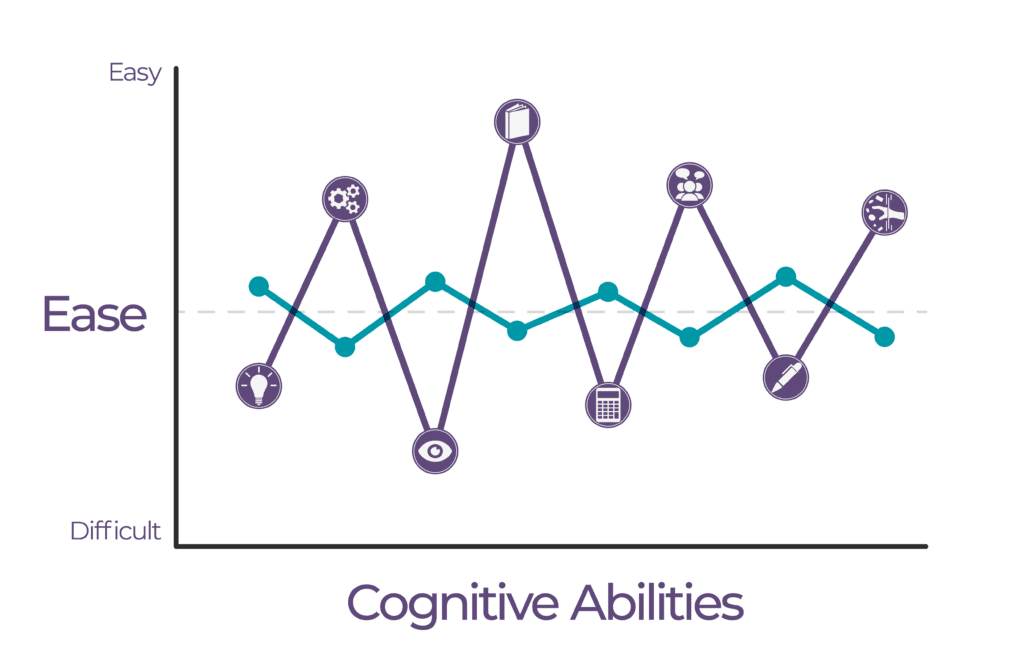What does Neurodiversity mean?
Neurodiversity is the concept that all humans vary in terms of our neurocognitive ability. Everyone has both talents and things they struggle with. However, for some people the variation between those strengths and challenges is more pronounced. This can bring advantage but can also be disabling.
Neurodivergent people tend to find some things very easy and other things incredibly hard. This usually leads to an inconsistent performance at school or work.
Neurodiversity can be a competitive advantage when the individuals are in the right environment, making use of their strengths, instead of constantly trying to overcome challenges. To achieve this we must create inclusive spaces to work and learn that reduce disabling factors and amplify diverse abilities.
Please note that the diagram provided offers common examples but is a simplification. Individual experiences, overlaps and abilities vary significantly.

A note about language
We are using the terms neurominority / neurodivergent / neurodistinct to refer to less typical neurotypes. For example ADHD, autism, dyslexia, dyspraxia, dyscalculia, dysgraphia and Tourette syndrome. We also recognise that any neurocognitive profile that is not “neurotypical” could be included as a minority group. This might include intellectual disabilities, mental health conditions, acquired brain injury or more.
Neurodiversity in the population
Our aim is to work towards a world where all variations in the rich tapestry of human cognition are accepted and enabled.
- 90% of disabilities are invisible
- 5% of the population have ADHD
- 1-2% of the population is Autistic
- 10% of the population are dyslexic
- 5% of the population are dyspraxic
- 1-2% of the population have Tourette Syndrome
- 14% of the population have mental health needs
- 5% of the population have an acquired brain injury
There tends to be a lot of overlap, but as you can see, it is fairly normal to have different thinkers in our population!

Understanding Spiky Profiles
“Spiky profiles” are a great way to explain the differences of ability that are associated with neurodivergence. The graphic below demonstrates this. Neurotypical cognitive profiles are expected to form a bumpy line across the categories.
Neurominority profiles have large peaks and troughs. Read more about neurodiversity in Chapter 2 of this British Psychological Society report, written by our Founder and Chief Science Officers, Dr. Nancy Doyle. The report also includes more detail about some of the different conditions we include under the neurominority umbrella.

Across all neurotypes the majority of our clients seek help for the following
Memory/Concentration
Organisation skills
Time management
These are related to executive functions – a part of the brain that we need for planning, managing our attention, thinking through our actions and making sense of what’s happening. The strengths we encounter are quite diverse but often include verbal skills, visual skills and/or memory, which can be an advantage on a balanced team of specialists and generalists.
Find out more about different neurotypes
What our clients say…
“Up until the point of my assessment I’d always seen my Tourette’s, ADHD, OCD, sensory processing as a big hindrance in my life, my life was chaotic. I had very low self-esteem. After having the assessment and finding out the results, I just really wish that I could have done that when I was a lot younger! It helped me to understand myself and to see what direction I should be going in. And since the assessment, many, many doors have opened to me. Now I carry my diagnosis with pride, and my neurodiversity.”
Paul Stevenson
The latest news and resources
Forbes Articles

Bodies, Brains And Burnout: Three Tips For An Emergency Reset
Posted on 06th Jun 2025
Disability

Three Reasons Why Disability Adjustments And Productivity Are The Same Thing
Posted on 02nd Apr 2025

